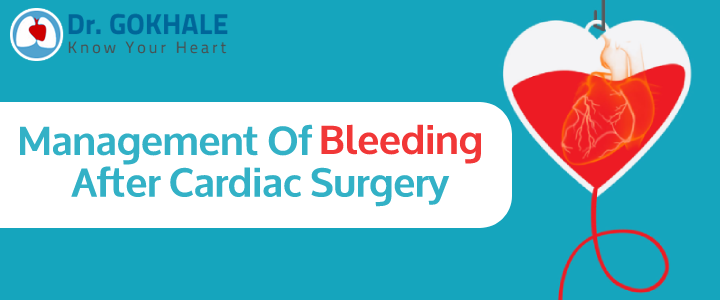There is no denying that any surgery is a difficult process for the human body to endure. Being externally cut into and restructured or fixed is not easy to bounce back from. That is why postoperative patient care is really important for the body to rest and recover after any long or difficult surgery.
In the case of cardiac surgery, the situation becomes even more complicated as the heart is the most vital and delicate organ of the body. After cardiac surgery, it is seen that most patients bleed, however managing the bleeding is extremely vital for avoiding complications of heart failure.
Cardiac bleeding:
- Some patients bleed only a few ccs of blood after a cardiac surgery while others it can be a few hundred ccs of blood or even litres before it comes to a halt.
- The blood that is shed after the operation is drained using chest tubes and collected by drainage canisters.
- At this point postoperative care is vital to support the patient until the body can independently begin coagulation, that is the formation of blood clots to prevent bleeding.
- In recent years researchers have realised that postoperative bleeding after cardiac surgery has increased because of the liberal use of medicines like Plavix which are antiplatelet. This highlights that the more medicines like Plavix are used the more time the body will take for natural coagulation.
- There are several other causes for excessive bleeding like urgent surgeries, patients in shock, problems with coagulation, a surgical bleed, etc.
Managing the bleeding:
The reason for bleeding can be many but what needs to be ensured is the management of the bleeding after the surgery. Listed below are a few crucial aspects in the management of bleeding after cardiac surgery.
Caregivers that are trained to deal with patients coming out of cardiac surgery know that it is vital for the bleeding to be taken out of the body rather than bleeding inside it. Ultimately where the blood ends up is very important if one wants to prevent side effects of heart failure. Until coagulation is restored in the body doctors put in chest tubes to remove the blood from the regions of the heart and the lungs.
While the chest tube is put in, the body is also simultaneously beginning the process of coagulation. This implies that the blood flowing out of the body from the chest tube can begin to solidify and get stuck. It is critical to keep the tube from being blocked otherwise the bleeding cannot be drained.
Nurses or caregivers often tap or strip the chest tube in case there are any obstructions. There can arise many complications of the bleeding left inside the body and hence this part of managing the bleed after cardiac surgery can mean the difference between life and death.
Getting operated from the most skilled doctors is important and Mr. Gohakle is a top-ranked heart surgeon in Hyderabad. Patients looking for an experienced and renowned surgeon should visit him.













